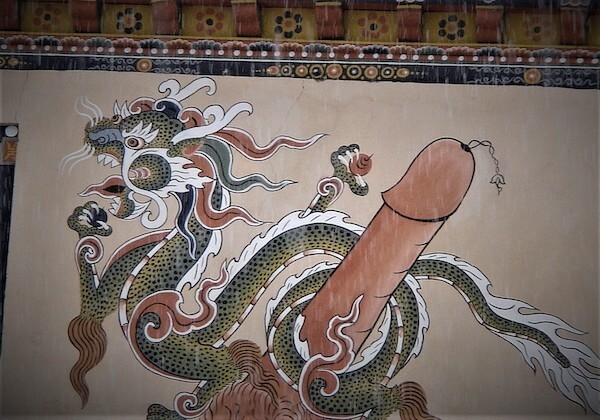 Phallus paintings in Bhutan are esoteric symbols that have their origin from the Chimi Lhakhang Monastery in Punakha. This village monastery was built in honour of Lama Drukpa Kuenley (1455-1529) who was popularly known as ‘Mad Saint’ or ‘Divine Madman’ for his unorthodox way of teaching.
Phallus paintings in Bhutan are esoteric symbols that have their origin from the Chimi Lhakhang Monastery in Punakha. This village monastery was built in honour of Lama Drukpa Kuenley (1455-1529) who was popularly known as ‘Mad Saint’ or ‘Divine Madman’ for his unorthodox way of teaching.
Phallus paintings on the walls are with the common belief that such a symbol brings good luck and drives away evil spirits and this belief is so much ingrained in the psyche of the common populace in Bhutan that symbols are routinely paintings outside walls of many houses. The carved wooden phalluses are hung (sometimes crossed by the design of sword or dagger) outside, on the construction of new houses, at the four corners. The wooden phalluses are also driven in the agricultural fields as a kind of scarecrow. The 'Atsaras' (masked clowns) also decorate their headgear with phallus painting cloth, during the popular 'Tshechus' (festivals) held every year in different monasteries throughout Bhutan.
In Chimi Lhakhang Monastery, Punakha, the shrine dedicated to Lama Drukpa Kuenley, several wooden phalluses are seen being used to bless people who visit the monastery on a pilgrimage seeking to bear a child or for the welfare and wellbeing of their children. The glaringly displayed phallus in the monastery is a brown wooden piece with a silver handle, a religious relic considered to possess divine powers and hence used for blessing the spiritually inclined people. It is also said to prevent and settle quarrels among family members in the houses where these symbols are painted.